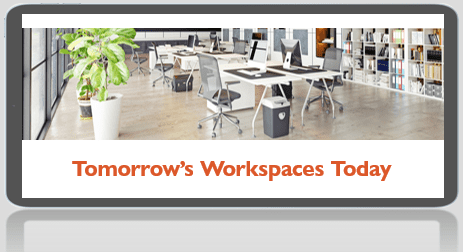7 Top Tips You Need to Consider When Moving Office
An office move can be one of the biggest decisions your organisation will make.
With people and workplaces being the two greatest costs any organisation has to meet, attracting the best people in the current climate means rethinking their working environment. Furthermore, taking current staff’s considerations into account when planning an office move are absolutely essential to the project’s success.
Discover seven steps your organisation needs to consider for a successful office move.
1. Appoint a Project Leader
The first part of this process is to engage with the key stakeholders and decision makers from IT, HR, Finance and Marketing and nominate a ‘Project Leader’.
The person appointed will be the point of contact and responsible for cascading information to the rest of the organization regarding the relocation. This person must have good communication skills, have respect, authority and ideally some previous experience with budgeting and fit out service completion.
2. Pick a Location
It’s important that the choice of location is the right one – not just for your business but also for your employees. Do you have a connection, network or see potential for growth in the location? These are important questions and HR issues to consider when thinking about your new location.
You’ll also need to consider how far it is for your staff to commute, and accessibility for clients to visit. Another consideration is car parking facilities – are there enough spaces to accommodate your staff and visitors?
Discuss options with your chosen property agent to ensure your workplace is suitably located and accessible.
3. Forecast a Budget
An office move is one of the biggest investments an organization can make. From rent to legal fees, insurance, furniture and additional security, everything comes at a cost. Ensure you have devised a plan that includes all costs; both expected and unexpected.
4. Information Technology
What is your IT strategy and how can it be implemented in the new workplace? Where are you storing your data and at what cost? An IT and data audit should be carried out to identify what data you currently store, how you store it and the procedures around it. This could help when it comes to cost-saving.
Another IT consideration is hot-desking — it can save office space but do you have the technology equipment to support it. Wi-Fi, cloud storage, and digital scanning services can all help to improve your IT efficiencies. This is also a great time to review how you manage your information and how it can be made more efficient in the new workplace.
5. Engage with Staff
Your organisation’s biggest asset is its employees, so it is vital keep them up to date on your relocation plans. You also have a legal requirement to inform them of any changes. Your selected office relocations company should offer, recommend and implement a staff communications programme as a part of the relocations package.
As well as communicating to staff, it’s important to understand what your employees really want out of their workplace and implement a plan to reflect this.
6. Furniture
When selecting new furniture, take the condition of your current pieces of furniture into account — has a piece lasted well due to quality, or through a lack of usage because it’s so uncomfortable? Care in selecting the best furniture is important, not least because it’s expensive.
Visit showrooms and take a seat, as touching, feeling and experiencing is the only way to really know if you’ve made the best choice. Think about how things will be used, where and when. Perhaps take some images of your planned colour-scheme with you to decide if a type of furniture will suit your new office.
Make sensible choices, but have some fun too. Other aspects we advise that you consider include warranties, rental, cable management and flexibility of furniture products.
7. Environmental and Sustainability Considerations
Sustainability issues are now a large and intricate part of any office move process. If sustainability is close to your organisation’s core values, then it’s important to consider your requirements throughout your office move process.
Beginning with the building selection process should also be considered as a part of the fit-out and move process.
A model sustainable office should be sensitive to its environmental impact. This includes energy and water consumption, equipment quality and long term energy efficiencies. Additionally, it also includes building materials, waste management and furniture quality standards.
As well as being responsible about the effect you have on the environment, the advantages to a sustainable office include increased productivity, reduced energy costs and a more efficient workplace.
We have put together a careful framework of all the steps your organisation needs to consider for a successful office move. Find out how to achieve the ideal workplace for your business today.
Related stories
In this blog, we delve into workplace consultancy, exploring the intricacies of workplace change and space utilisation strategies and their profound implications for businesses.
Sustainability remains a top business priority for Crown in the UK & Ireland and globally; we are therefore delighted to have launched our 2023 UKI Sustainability Report!
Crown are delighted to announce that we have been awarded Gold by EcoVadis in 2024 for the second time, reflecting our commitment to and progress in becoming a responsible business.




















